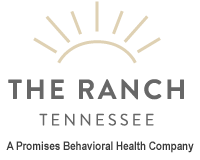If you’ve been stuck in the “just one more time and then I’ll quit” refrain and getting no closer to that promise as the weeks and months mount, it may be time to seek professional help. Choosing a detox treatment program is the first step on the path to addiction recovery. Detox is the process of allowing the body to rid itself of the toxins that have built up due to drug or alcohol abuse. There are both inpatient and outpatient detox programs, but anyone who has been using drugs for a long time or drinking heavily on a frequent basis will likely do better with the higher level of support offered in inpatient detox. A doctor is also likely to recommend inpatient detox for people who have been unsuccessful in previous attempts to quit. Outpatient detox is typically reserved for those who have been abusing drugs or alcohol for only a short period of time and are in relatively good health. Outpatient detox also requires an individual to have at least one person willing to help support them throughout the process. While inpatient detoxification is more costly than outpatient detox, repeat detoxifications and outpatient treatment as a result of making the wrong initial choice is wasteful and ultimately costs more, says the National Council on Alcoholism and Drug Dependence. Patients stay in an inpatient detox program for as little as three days, and as many as 12, depending on their general physical state.
Detox Symptoms
Withdrawal syndrome occurs when an individual abruptly quits or reduces the use of a substance thathas been taken repeatedly, typically in high doses.Anxiety, insomnia, nausea, body aches, sweating and tremors are just a few of the symptoms that may occur during alcohol and drug withdrawal. The onset of the withdrawal syndrome depends on the substance and dose. Here are some of the symptoms of withdrawal:
- Alcohol withdrawal syndrome is particularly dangerous. Symptoms may include seizures and hallucinations and may progress to delirium tremens (DTs). Unmanaged alcohol withdrawal syndrome can result in death.
- Sedative withdrawal syndrome has symptoms similar to alcohol withdrawal, but may also include muscle aches and twitches, trouble sleeping and agitation. These symptoms can become worse, resulting in life-threatening complications such as high temperature and seizures. Benzodiazepines including Valium, Ativan and Klonopin are in the sedative class of drugs.
- Opiate withdrawal is accompanied by flu-like symptoms such as a runny nose and eyes, aching muscles, chills, anxiety, vomiting and abdominal cramps. These withdrawal reactions are extremely uncomfortable but are not life-threatening. Opiate drugs include heroin, morphine, codeine, OxyContin and methadone.
- Stimulant withdrawal is characterized by depression, malaise, paranoia, fatigue and instability. Stimulant drugs include cocaine, methamphetamine, MDMA, Adderall and Ritalin.
Benefits of Inpatient Detox
The goal of any detox program, outpatient or inpatient, is to safely relieve the symptoms of withdrawal, but inpatient detox is preferable for many reasons. Here are a few of them:
- Inpatient facilities are able to dedicate medical staff to the addict 24 hours a day. They’re well equipped to manage both the physical and emotional symptoms of withdrawal.
- Inpatient facilities provide a safe place to recover, removing those struggling with addiction from temptation and their old habits. Replacement medications are offered to help with the more severe detox symptoms.
- In an inpatient environment, people are protected from stress factors that may serve as triggers for resuming the use of alcohol or other drugs. There are no work responsibilities, no tension with family members, no sick children. An absence of stress provides a healing environment that lets people focus exclusively on getting better.
- Inpatient stays are best if you have overdosed in the past or if you relapsed after outpatient detox and treatment.
Detox Is Not a Cure
The process of detox doesn’t do anything to remove the addiction. The factors that drive your substance use are still there. That’s why it’s imperative that you also complete rehab to learn to address problems as they arise in your life without turning to drugs or alcohol. In 2012, a Johns Hopkins study found that people who committed to continuing treatment after detox were up to 10 times more likely to remain drug-free than people released from detox with minimal assistance. It can take a long time for addiction to develop, and it can take a long time to relearn how to live substance-free. The good news is that addiction is a treatable disease. Millions of Americans are living healthy and productive lives in long-term recovery. Ready to take that first step?

